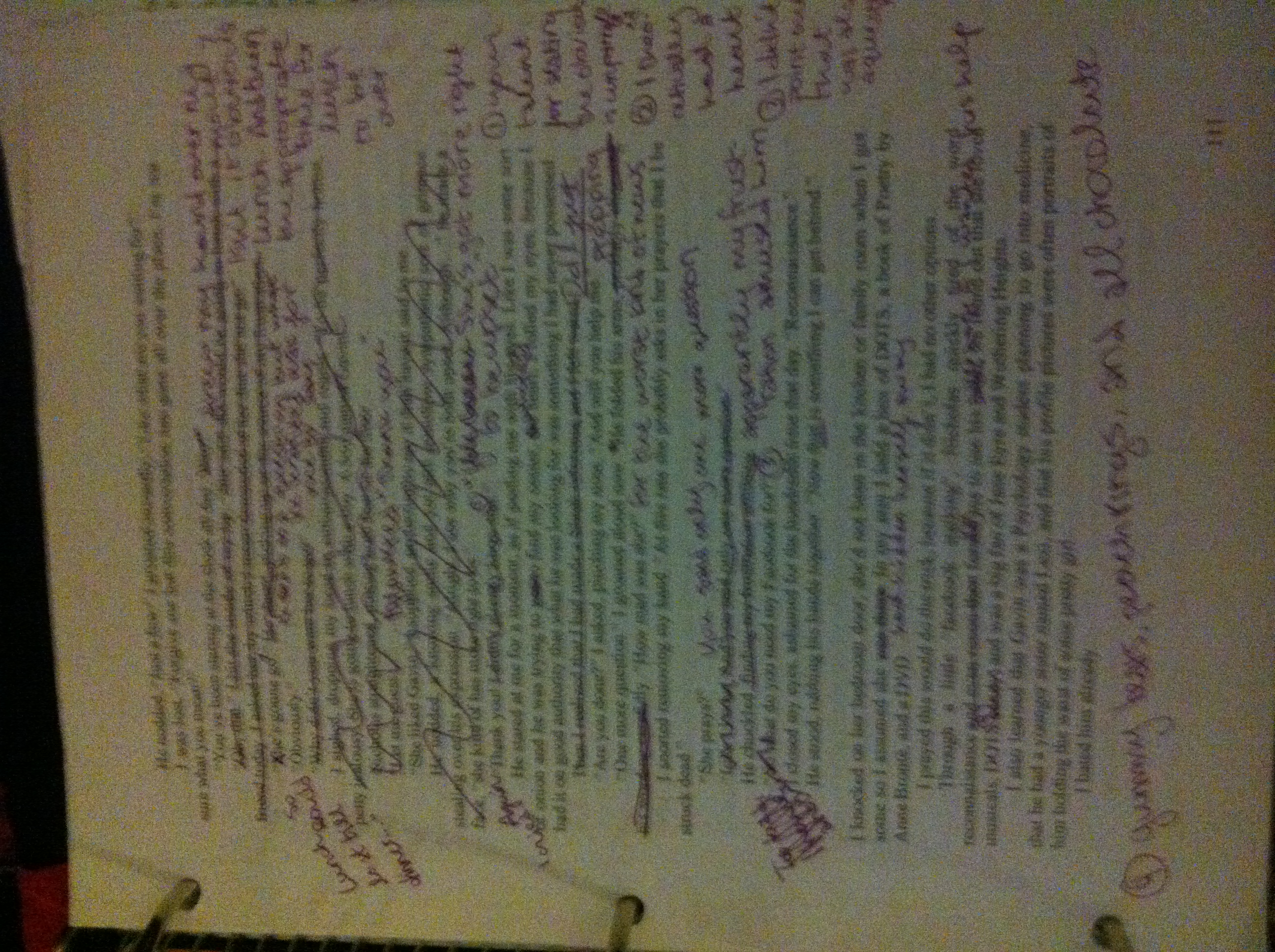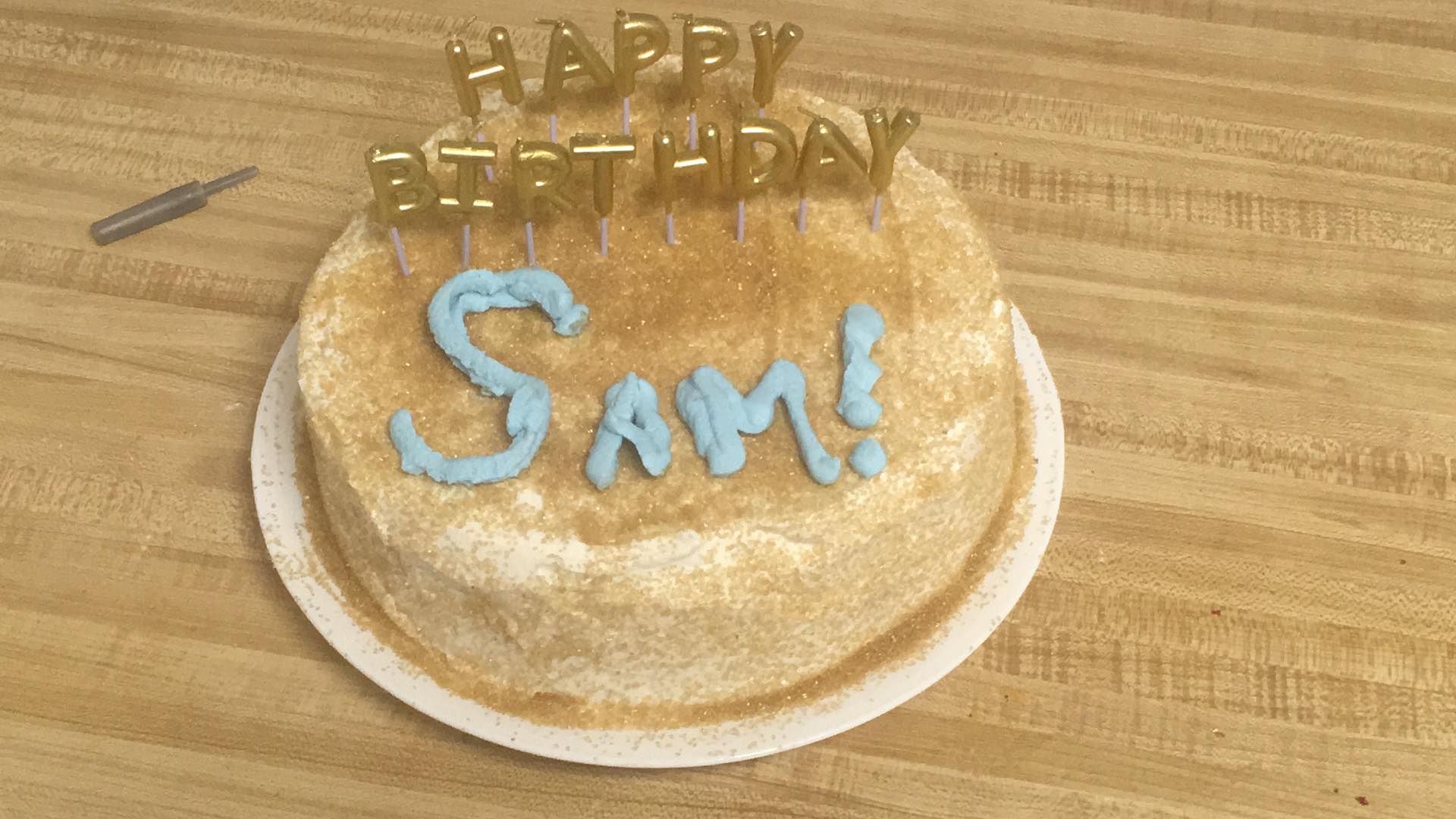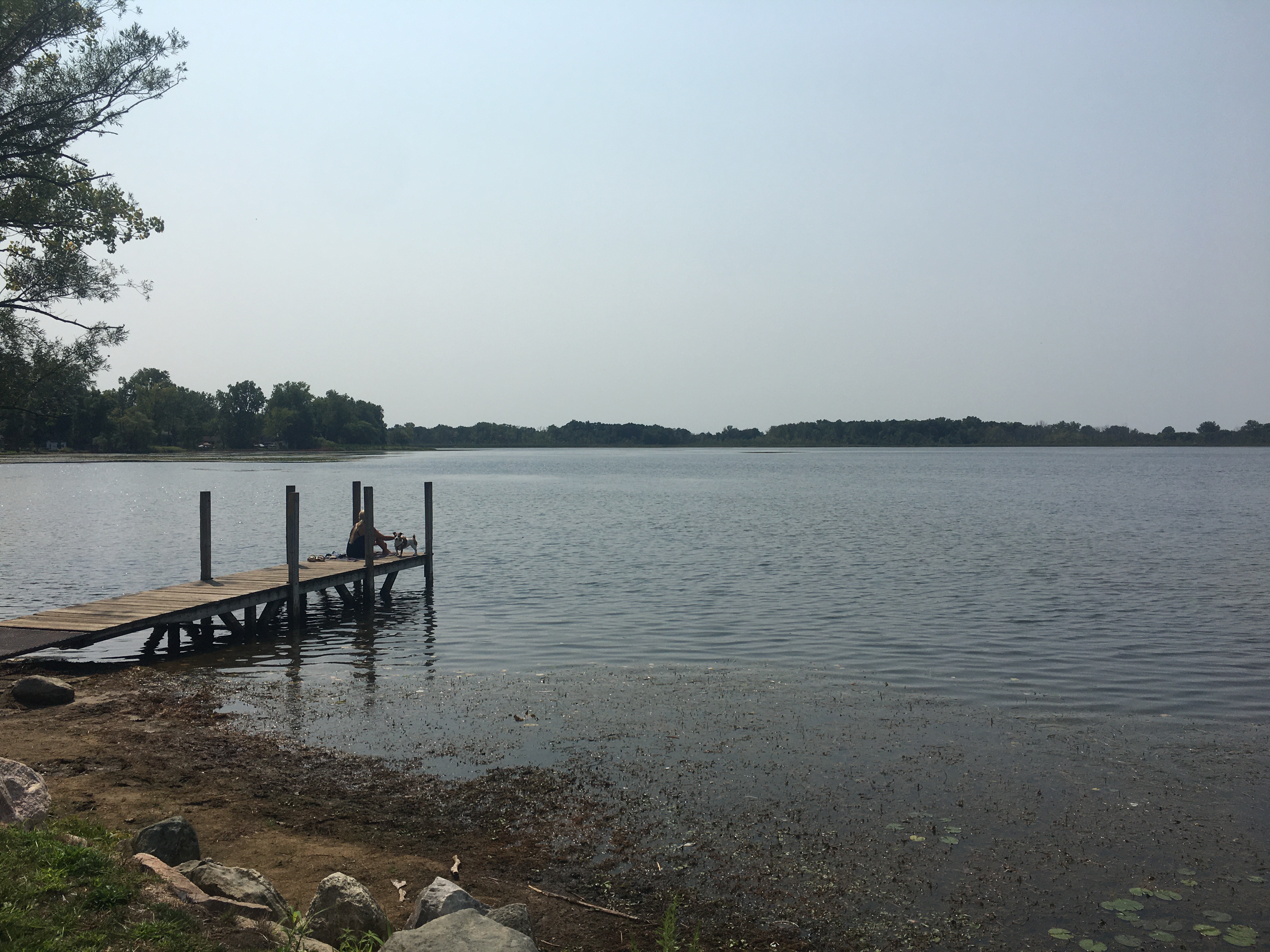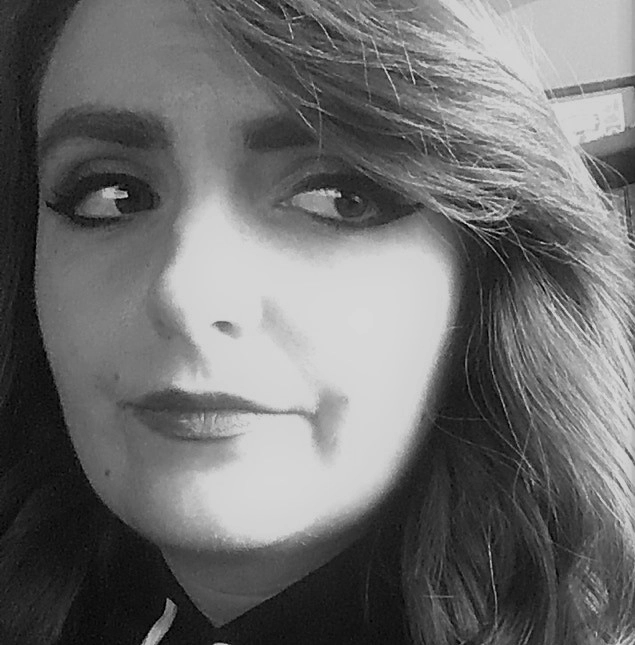I was ten years old when I started writing what could’ve been my first novel. I know I was ten because I remember sitting on my bed in my basement bedroom with the purple walls and scrawling away in the black notebook that had been gifted to me by a family friend thinking about what age to make my main characters. I decided they were going to be twelve, but I was concerned that as a ten-year-old I wouldn’t be able to accurately capture the experience of someone two years older than me. In the end I couldn’t convince myself to sacrifice my artistic vision, so Flare and Melody were two twelve-year-old best friends living in Los Angeles who would discover they were actually twins, and heirs to a hidden fairy kingdom.
I remember drawing a sketch of a snake shaped pendant in between paragraphs, it had something to do with the villain, and being incredibly proud of how it turned out. I remember spending hours drawing a book cover, with the sisters standing back-to-back, Flare in a red dress and Melody in a blue. I remember pondering for days and finally deciding to title my maiden endeavor Wings.
Wings was the focus of all my creative energy for over two years. I would scribble ideas and dialogue in the margins of all my school notebooks, no matter the subject. I would act out scenes I wanted to write in my mirror, teaching myself to fake cry. I’d work out plotlines while cleaning my room, listening to Evanescence and Hilary Duff, stretching my story into a trilogy. I would practice my signature in the margins, imagining the day I would need one to adorn a front page. I was consumed.
And then I moved on.
I had a few little projects in between, drawing inspiration from songs and movies, but when I was twelve I struck gold again – a story about an immortal witch living in a small town in Montana with her sisters, all of whom had been near victims of the Salem Witch Trials. I would go back and forth between modern day and flashbacks, drawing parallels and repeating patterns, all of it culminating in a second wave of witch trials that would put not only our heroine at risk, but her newfound best friend.
I spent hours doing research, reading Wikipedia pages and those poorly designed educational websites with the solid color backgrounds and plagiarized pictures. I read historical fiction, and any YA novel about magic and witches I could find. I wrote up character sheets where I’d keep track of details like favorite color and birthday, desperate to make all my characters unique and separate. I drew another book cover and hung it on my wall. I read the FAQ on various author’s websites, trying to decipher foreign words “query” and “literary agent”. I was zealous.
I called it Witch Hunts, and I wrote 14,000 words.
And then I moved on.
When I was a freshman in High School I rewatched Disney’s Beauty and the Beast for the first time since I was a little kid. To say I was moved would be an understatement – I was completely blown away. I became obsessed with fairytales, Beauty and the Beast in particular. I had to tell my own version, something different but as meaningful as its predecessor. I wanted a part of that story, and I decided that, as Dan Humphrey of Gossip Girl so aptly put it, “I could write myself into it.”
I would read every iteration of Beauty and the Beast I could get my hands on. I watched every film version and dedicated one night a week to watching, and possibly rewatching, the CW tv show. I made playlists, that borrowed heavily from Taylor Swift’s RED, and listened to them on repeat. I went for drives through the backwoods of my small Michigan hometown thinking solely of my story and how I was going to tell it. I googled “how to get published” and “literary agent” and “how to write a query letter”. I was devout.

An edited page of my Beaty & the Beast novel, Beasts & Roses
And my story grew. And after about five years I had not only a 187,000 word novel on my hands, but plans for a seven book series, drawing inspiration from Sleeping Beauty & Cinderella and almost every fairytale under the sun.
And then I moved on.
In the summer of 2017, at the young and dumb age of 21, I was diagnosed with Bipolar Disorder, and it felt like everything shifted ever so slightly to the left. I was on new medications that changed my diet and sleeping patterns. Going for impulsive late-night drives to Evanston went from a fun little thing I did to the foreshadowing of something sinister. And, worst of all, every relationship I had was suddenly at risk. Especially the new ones.
I’ve always been volatile. I’ve always been difficult, stubborn, and moody. But before that was just a quirk; it was something I felt I had control over. Now it was the side effects of a mental illness. A mental illness that I couldn’t get rid of and that would flare up without warning, intermittently, for the rest of my life.
And that’s the kind of thing you have to tell your new roommate about. And maybe your boss. And probably that guy you’ve been seeing.
I didn’t have a lot of hope. But I wanted.
My entire life I have associated people, songs, words, and numbers with colors. No, I don’t have synesthesia, it’s a lot more subtle than that, but I do color the world around me. People are the most elusive of these, and details like birthday, hair and eye color, name, and various personality traits all go into determining what color a person is. It’s not a science, and it’s more gut feeling than anything, but most of the people in my life I can define via color. And in the summer of 2017, I was absolutely smitten with a blue.
And I was turned down.
Some days after I’d had my heart delicately stomped on, I was lying in my bed, staring at the ceiling, thinking about blue, and how, theoretically, it was the perfect match for me, a red. It was the ultimate trope in movies and television. I’d even written it, using it in Wings show the sisters nature as foils. So why didn’t this blue, this perfect match to my red, love me?
And then I had the strangest thought. I thought about the color gold, how beautifully it paired with red, particularly my shade of burgundy, and I wondered, “What would it be like to be loved by a gold?”
And then I wrote a novel about it.
I wrote the story of Harper and Sam, a girl with Bipolar Disorder and a boy with OCD who meet in the psych ward of a hospital and begin the tentative and hard fought journey of a relationship with severe mental illness. I read books on OCD and Bipolar Disorder, checking them out from the library and buying them from Barnes & Noble. I scanned entire chapters of the DSM V and read them over and over, taking notes and highlighting the symptoms I felt were most important for my “patients”. I made a file on Google Maps where I saved pins of every location the characters visited, from Harper’s house to a laundromat. I listened to Taylor Swift’s reputation religiously. I made Pinterest boards full of quotes and pictures and links to websites and blog posts by authors and agents about the publishing projects. I made a Querytracker account and looked up the names of agents I found in all my favorite books. I started writing a query letter. I was devoted.

A cake I haphazardly decorated in honor of Sam's birthday two years ago.
After a shit ton of editing and three years of work, I ended up with Things That Glitter, a 207,000 word realistic fiction romance novel. And I was stupid enough to send it to an agent.
I was rejected of course, the novel is much too long and very dense so I doubt they even read the chapter I sent, but I tried and I think that’s what matters.
For a long time I thought that was it. I believed Things That Glitter was my magnum opus. It was my beating heart. It was every sensitive piece of me, my insecurities, my indignation, my needs and wants. It was what I knew, and as long and dense as it was it was full of my most insightful and delicate writing. Things That Glitter was going to be my last love, the great love of my life.
And then I moved on.
I don’t know if that’s a tragedy or not.
For a little while there I jumped from project to project – an epic about a war between human and vampires, a Russian mob thriller inspired by the Killer’s Hot Fuss, a tragedy about two brothers in love with the same girl – I liked them all, but none of them held my attention for very long. I wasn’t ready for them yet.
But the summer of 2020, locked up in my apartment, mourning my fading youth, and desperate for something to entertain me, I watched She-Ra & the Princesses of Power. Days after I finished I came out as bisexual. A month after that Taylor Swift released her eighth studio album folklore. And two weeks after that I had a dream where I kissed Blake Lively. It was the convergence of all of this that had me feeling very sappy, very gay, and desperate to write again. And I did. I wrote my first love story about two girls.
I wrote about Hannah & Ivy, best friends since childhood who the summer after their senior year became something more. I wrote about a major fall out, and twelve years of total silence. I wrote about reconciliation, forgiveness, and rediscovery. I wrote about the battle of self-improvement, the truth of a person, and the valiant efforts we make to be happy. Most importantly I wrote about two girls who loved each other with their whole hearts.
I wrote this all in a month.
Then I rewrote, and edited, and made playlists, and did research, and scouted locations, and shared drafts with friends, and took in feedback, and edited some more, and shared with more friends, and filled out character sheets, and wrote bonus scenes and query letters, and shared those with friends, and read it over and over again. I was ardent, and I was determined.

A picture my brother took of Park Lake, an important setting in Honey, Love Me.
Honey, Love Me is now a 68,000 word contemporary romance novel that has been sent to not one, but two agents.
And I have not moved on.
Something is different, something is certain that wasn’t before. I sat in my therapist’s office over a year and a half ago, tears in my eyes, and said to him, regarding Things That Glitter, “It’s slipping away. I’m falling out of love. I don’t believe in it anymore.”
To fall out of love with something you’ve written is to fall out of love with a piece of yourself, and it hurts. It’s an ache of emptiness in your chest. And when the ache subsides what’s left is a phantom soreness that flares when you remember what you’ve lost. The fear of this feeling paralyzes me and has kept me from finishing dozens of projects. Because once they’re done, they’re potential realized, they are good or bad, and by extension, so am I.
But Honey, Love Me is good. It’s poignant and meaningful. I know that. I know that because it moves me. I know that because I like to read it.
I don’t know how to write a novel. I know how to let myself get carried away. I know how to care, deeply, about something that isn’t real. I know how to express myself and infect others with my passion. And I’m learning more every day.
I’m learning to love the parts of myself that are less sparkly, that are “bad”. I am better for the fairies, witches and fairytales I let into my life; for the stories I wrote about girls like me who fell in love. I am better for the heroes I gave myself, even if they were not my heroes forever.
Toni Morrison said, “If there's a book that you want to read, but it hasn't been written yet, then you must write it.” Every step along the way I have been writing those books – my favorite books, and I’ve been writing them for me. And when I move on to my next story the old one will have left a handprint on my heart.
So, if you want to write a novel, if there is a book you want to read, just do it. Try. Even if you never finish, even if you can’t get a thousand words, even if all you ever do is daydream, lean in. You’ll be better for it, and you deserve to know what happens next.


